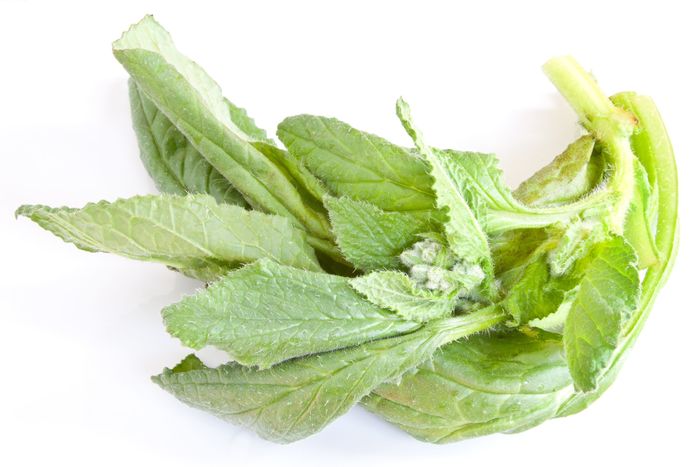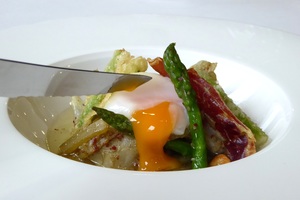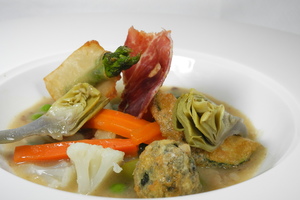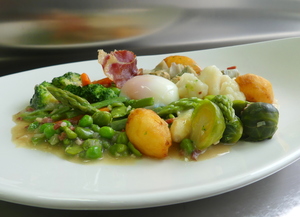Borage
Borage is the most representative plant of the Boraginaceae family. The stalk and leaves of this kind of plants are usually covered with hair. The family includes more than 150 genera and 1,500 species that grow up spontaneously in all template and subtropical regions of the world. They are especially abundant in the Mediterranean basin.
Nowadays, in countries like France and Italy, borage is considered a luxury vegetable, and dishes made from it are presented as an authentic delicacy in the most prestigious restaurants. In the northern of Spain, on the banks of the Ebro River in the provinces of Navarra and Aragon, there are plenty of irrigated lands dedicated to the cultivation of borage.
In that zone of the country, the plant is particularly appealing in winter, the best season for its cultivation, even though fresh borage can be purchased in the market all year round.
The best quality plant is one with fresh, tender and intact leaves, with a shiny and uniform green colour. Borages with very rough leaves and thick, fibrous and yellowish stalks are not a good choice nor those with too soft and wilted leaves.
As it is a highly perishable vegetable, it should be kept in the fridge inside a perforated plastic bag. It should not be washed until the very moment it is going to be cooked.
It is sold fresh, frozen and canned.
-
Type of dish
- Juices, milkshakes and beverages
- Beers
- Pastries
- Coffee, chocolate and infusion
- Cocktails
- Sándwich
- Pizzas, patty
- Dessert
- Ice creams and sorbets
- Finger foods
- Breakfasts and brunch
- Shellfish
- Salads
- Birds
- Bread and pastries
- Legumes
- Soups and creams
- Meats
- Burguers
- Pasta
- Main course
- Fish
- Rices
- Vegetables
- Eggs
- Patty
- Cheeses
- liqueur
- Appetizers and canapes
- Temperature
- Cuisine type
- Additional culinary preparation
- Conservation technique
- Seasonal recipes
-
- Aromatic herbs
- Beverages
- Big game hunt
- Bread and pastries
- Canned goods and pickles
- Cereals
- Condiments, spices and additives
- Cooked, salted, preserved and cold meats
- Dried fruits and nuts
- Dry pulses
- Edible oils and vinegars
- Eggs and derivatives
- Feathered game hunt
- Fish cuts
- Fishes
- Insects
- Kitchen and bakery tecniques
- Kitchen and bakery utensils
- Meat cuts
- Meats
- Milk, cream and derivatives
- Mushrooms
- Offal
- Pasta, rice, flour and derivatives
- Poultry
- Seafood
- Service techniques
- Service utensils
- Vegetables cuts
- Vegetables, fruits, tubers and seaweed




